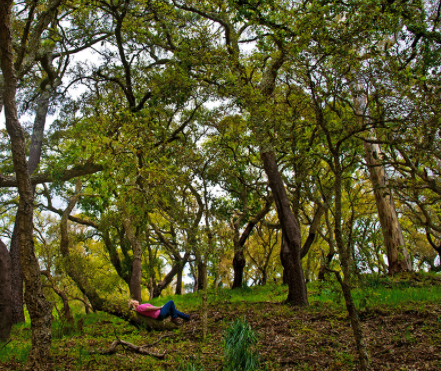
Susan Radford understands the healing power of forests. The incredible healing capabilities that forests have to offer has enabled this special therapist to turn her passion for nature into a profitable practice that promotes the health and well-being of her clients. Susan guides and coaches people in ways to use the sights, sounds and smells of the woods to create a sense of calm within. She uses a practice called ‘forest bathing’ to achieve these effects with her clients.
What is forest bathing?
Forest bathing, or shirin yoku, as its referred to in Japan, where the practice originated and is an accepted part of Japanese preventative health, draws on thousands of years of intuitive knowledge. It recognizes that we are a part of nature and have a deep need to connect with it.
How does forest bathing work?
Having been around since the 1980s in the land of its inception, forest bathing is based on scientific research which has concluded that the practice deserves its place in the Japanese health-care system. The real and long-term benefits of forest bathing include:
- Stress reduction,
- Improved mood,
- Increased creativity,
- Boosted Immune System,
- Reduction of High Blood Pressure,
- And accelerated recovery from illnesses.
Let’s look more in-depth at each one of these fantastic benefits.
Stress Reduction – According to Yoshifumi Miyazaki, a professor at the University of Chiba (Japan), leisurely walking in the forest, a practice he’s been studying since 2004, yields some amazing stress reduction benefits such as decreasing cortisol (the stress hormone) by 12.4 percent when compared to walks done in more urban settings. Participants in his studies have lower overall anxiety.
Improved Mood – Academics at Derby University have reached the conclusion by conducting a meta study of existing research showing that connecting to nature can be directly linked to happiness and well-being. When one spends time in nature, they release hormones that relate to the pursuit of joy while connecting them to tranquility and allowing them to ‘avoid threats’ to their well-being and mental health.
Increased Creativity – David Strayer, from the University of Utah, studied the effects of forest bathing on creativity. He discovered that participants in the study noticed a 50% improvement in creative problem solving just three days after they were immersed in nature with all access to modern technology removed.
Boosted Immune System – Trees and plants emit ‘phytoncides’ when we breathe in during our time spent in the forest. This fact has been proven by Qing Li, a researcher specializing in shirin yoku. According to Dr. Li, engaging in forest bathing can enhance the ability of natural killer cells that help our bodies fight disease.
Reduction of High Blood Pressure – Forest bathing has been proven to reduce blood pressure. A recent meta study in Japan reviewed 20 trials involving over 730 participants. These trials demonstrated that blood pressure levels in the forest environment were significantly lower than those in a non-forest environment.
Accelerated Recovery from Illness – Nature, as it turns out, can be a powerful catalyst in the recovery process. Dr. Roger Ulrich, the author of the most well-known study in this area, is an architect who specializes in healthcare building design. His research shows that even a natural view from a window reduced convalescence time by one full day compared to an urban view.
So, how do you forest bathe?
Forest bathing, aka forest therapy, in its broadest sense, means taking in all of one’s senses while immersed in a forest atmosphere. It’s not simply a walk in the woods, although forest bathers often do enjoy walking in forests. Rather, forest bathing is the contemplative practice of being immersed in the sights, sounds, and smells of the forest.











